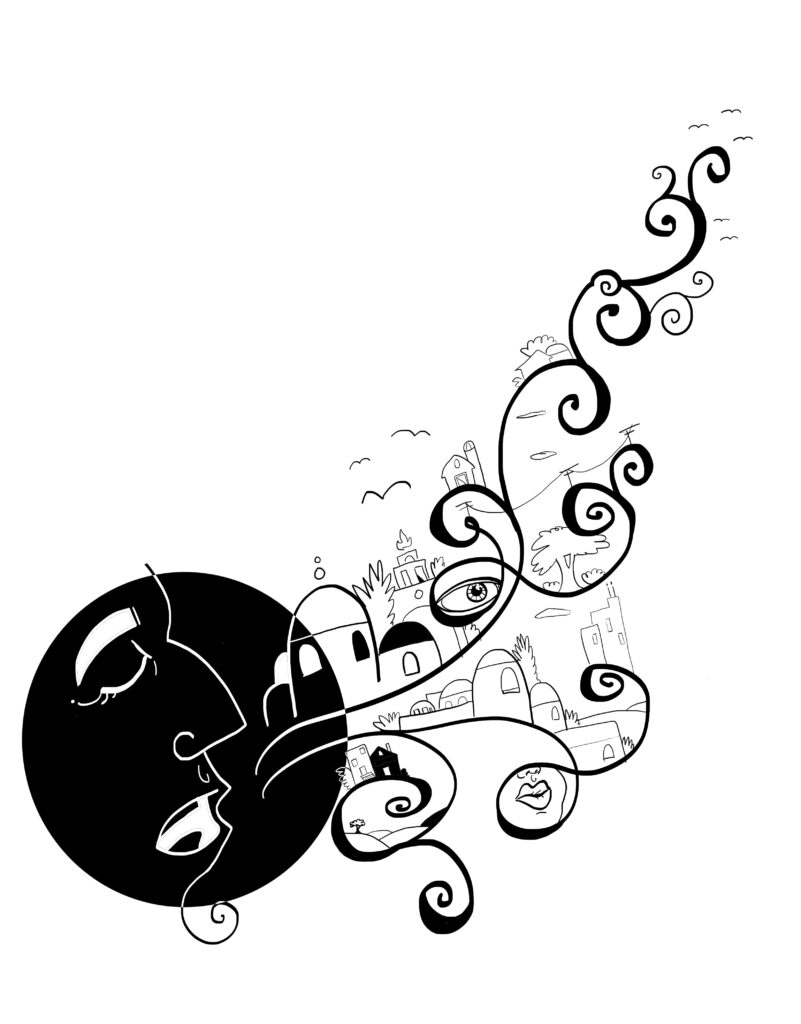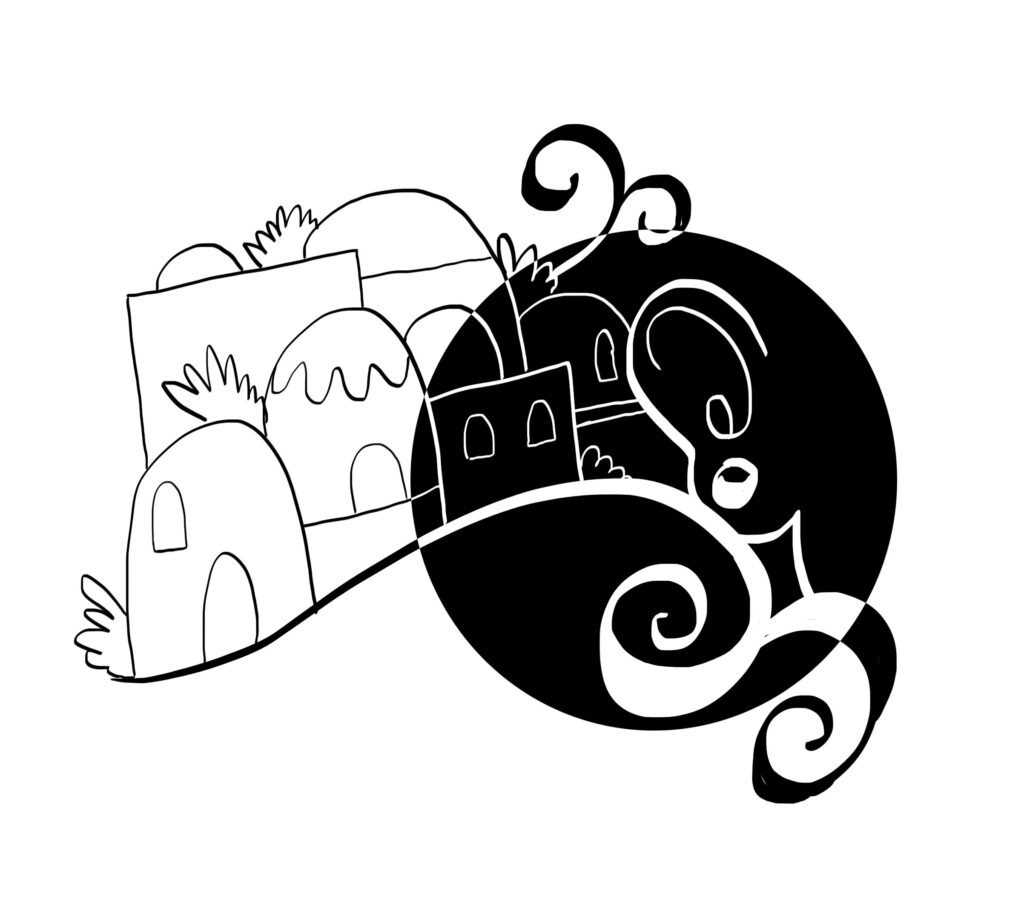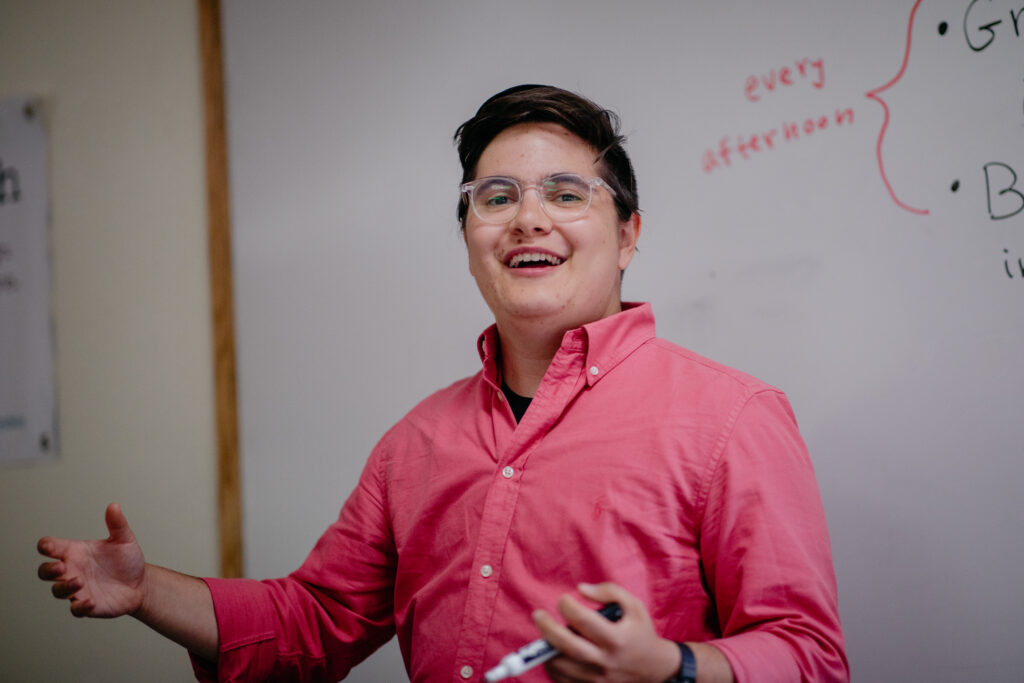The following is an excerpt from Fragments, the new magazine from Emor.
by Laynie Soloman
Free speech, and freedom of expression more broadly, have been contentious for as long as they’ve been spoken into existence, but recently I’ve been struck by the rising binary of “freedom” vs. “censorship” that has emerged across political lines. This past year saw the banning of 1600 books across the United States, a reinstatement of thousands of Twitter accounts previously suspended for sharing misinformation, and the “Individual Freedom Act” in Florida which attempts to place constraints on teaching Critical Race Theory and anti-oppressive theories in educational settings.
As a response, I’ve seen Jews rightly push back against these acts of censorship and misinterpretation of free speech, often using their own claims of free speech as their defense. However, I’ve felt more and more strongly that what these arguments miss is that “freedom” is not the Torah’s highest concern when it comes to speech. Instead, I believe impulses to resist these authoritarian measures can be better understood with a more nuanced approach to speech that comes from our tradition, which is that of world-building and accountability.
From its very beginnings, Jewish tradition has emphasized the reality that words shape worlds. Speech in Judaism is not free—it is incredibly costly. The power of words and speech-acts to bring about material transformation appears in the earliest moments of Torah as God creates the world through speech; God is referred to throughout Jewish text and liturgy as “the one who spoke and the world came into being.”

Precision of speech is essential, and halakha is full of moments in which speech-acts enact new, significant realities. From the most ordinary sacred moment of reciting a blessing to the most life-altering exchange of enacting a vow, our words carry material-shifting weight. Because language is a tool to use properly and specifically to create these new realities—to effectuate business transactions, to make or break vows, to establish partnerships, and to enact new obligations—it simply cannot be “free.”
I have personally felt the power of language to affirm and confirm reality as new dimensions of language have been uncovered to describe gender and sexuality. New words have brought kaleidoscopic clarity into my life, gifting me the opportunity to find new parts of myself and unlock new, clearer paths toward self-expression and self-actualization. Trans folks and minoritized people have long understood the power of language as a tool for world-building because, in many cases, it’s all we have.
Our rabbinic sages understood this as well and established essential measures for ensuring its accountable usage. They created a prohibition against interpersonal ona’ah—exploitative, abusive, or harm-creating discourse—called ona’at devarim1. The mishnah in which they introduce this legal category is exquisite and precise (Mishnah Bava Metzia 4:10):
Just as there is a prohibition against exploitation [ona’a] in buying and selling, so is there ona’ah in words or discourse. One may not say to a seller: “How much is this item?” if one does not wish to purchase it. If one has done teshuva, another may not say to them, “Remember your earlier deeds.” If one is a child of converts, another may not say to them, “Remember the deeds of your ancestors,” as it is written “And you shall not mistreat a convert, nor shall you oppress them” (Exodus 22:20).
This mishnah appears in the middle of the chapter that explores ona’at mamon, fraudulent or exploitative purchases and sales, examples of which include knowingly using counterfeit currency and charging above or paying below market value for an item. In the midst of discussing the minutiae regarding how one must avoid exploitation and harm in financial transactions, the Mishnah legislates these concepts in the realm of interpersonal communication. The teaching is clear: Just as we take exploitation, manipulation, and abuse seriously when it is enacted through financial means, we must also take it seriously when exploitation, manipulation, and abuse are enacted through words.
The structure the mishnah uses to introduce this category of ona’at devarim is striking: just as—in the same way we intuitively know that money, while symbolic, is in fact material—so too with words. The emergence of verbal harm or exploitation out of financial exploitation cannot be ignored: Using their reality-shaping tool of language, the rabbis codify a new reality into being—one that affirms that words have impact. That is to say, they speak the impact of words into being through their creation of a new category; using words, they make it real that words have impact.
Cases in the mishnah move from words and communication that can have financial impact—like asking someone how much an object costs with no intention to purchase it—to words that have a less immediately visible impact—like reminding someone who has restored their relationship about a previous moment of harm they’ve caused. In the Talmudic passage that explores this mishnah in greater detail, the rabbis add even more examples of ona’at devarim. These include even the non-verbal browsing in a store that might convey interest to a merchant while having no interest in purchasing, or knowingly sending someone seeking directions the wrong way. WIth these new cases, the Talmud introduces new layers of what both ona’ah—harm—and devarim—words—might mean. Here, ona’ah encompasses intentionally misleading someone and steering them in the wrong direction, and devarim includes non-verbal, symbolic cues and communication.
As the Talmud continues, our sages elaborate further on the power of ona’at devarim, eventually claiming its significance over ona’at mamon, the category from which it was originally derived. They argue on three axes:
Rabbi Yochanan says in the name of Rabbi Shimon ben Yochai: Greater is the transgression of ona’at devarim than the transgression of ona’at mamon, as with regard to this [ona’at devarim] it is stated: “ You shall fear your God.” But with regard to that [ona’at mamon] it is not stated: “ You shall fear your God.” And Rabbi Elazar said: This [ona’at devarim] affects one’s body; but that [ona’at mamon] affects one’s money. Rabbi Shmuel bar Nachmani says: This [ona’at mamon] is given to restitution; but that [ona’at devarim] is not given to restitution. (Bava Metzia 58b)
According to Rabbi Elazar, harm that is enacted through words, symbols, or discourse is supremely significant because there is no clear path to restoration; it cannot be rectified. Rabbi Shmuel bar Nachmani argues instead that it is the way the interaction lives on in one’s body as a result of ona’at devarim that makes it harmful. Harm through words creates real bodily impact, teaches this text; the Talmud knows that the body keeps score2.
It is here that we can begin to see the echoes of connections between ona’at devarim as it is articulated by our sages and arguments made by scholars of feminist and Critical Race Theory about the First Amendment. In a 1996 essay “Burning Acts: Injurious Speech,” Judith Butler elaborates on their theory of performativity—that realities are created through repetitive ritualization and performed actions and words—and asks when and how a speech-act moves from speech to act. Butler asks, “What does it mean for a word not only to name, but also in some sense to perform and, in particular, to perform what it names?” In the language of our sugya, Butler might ask, “When does the davar become ona’at devarim?”

With this question, Butler joins scholars and legal theorists like Richard Delgado and Kimberlè Crenshaw, whose work applies Critical Race Theory to the First Amendment as they agitate for more accountability and protection from “assaultive speech” within the American legal system. In Words that Wound: Critical Race Theory, Assaultive Speech, and the First Amendment3, Crenshaw in particular explores the role that speech, along with symbols and representation more broadly, “plays in constructing the unique combinations of racism and patriarchy that limit and endanger the lives of women of color” (p. 10). Because speech is legally injurious only when the relationship between “word” and “wound” is clear, Delgado attempts to demonstrate the ongoing psychological and embodied trauma that creates long-term injury to those targeted by wounding words, particularly as it relates to the verbal harm of anti-Black racism and oppressive language4. Here Delgado’s project finds support in both Rabbi Shmuel bar Nachmani’s assertion that ona’at devarim remains in our bodies and Rabbi Elazar’s view that restitution for such harm is indirect and unclear.
Ona’at devarim in the Mishnah does not necessitate a clear and direct line between action (or speech-act) and injury. Harm is enacted even when there is no demonstrable “injury.” Rashi, among other commentators, points out that these interactions are made ona’ah not even because of their impact but because of their intent. The Talmud specifies that this interpersonal transgression is considered one of devarim shemasur lalev, things that are contained within the heart, and therefore rely on intention. The movement from speech to speech-act, in Butler’s language, happens internally, even prior to the speech itself. In the case outlined in the Talmud, by simply deciding to send someone the wrong direction, an individual has set the ona’ah into motion. Ona’at devarim is enacted even before any words have left the speaker’s mouth, even prior to any harm being actively felt.
It has been powerful to learn about this legal category of prohibited speech-acts in SVARA’s batei midrash full of trans and non-binary folks in particular, who know acutely the ability of words to give voice to our experiences and make them real. In uncovering the layers of this text with other trans folks and people with minoritized identities, I’ve been able to deepen my own relationship to speech-acts and find grounding, support, and frameworks for relating to harm that I both experience and inadvertently cause through the realities that I create with my words.
Ona’at devarim is just one of the halakhic pathways toward honoring speech-acts and elevating an approach to language that moves beyond an attempt to locate “freedom” in speech. Our tradition also prohibits lashon hara (negative speech about another person) and rechilut (gossip). Many texts frame an avoidance of lashon hara and rechilut as a proper path for cultivating piety and self-refinement. While these are important elements of a reconstructed ethic of free speech, an overemphasis on these approaches obfuscates the centrality of accountability that ona’at devarim brings.
Instead, ona’at devarim elevates accountability and obligation: it emerges in the Mishnah in Seder Nezikin, the order of Mishnah and Talmud that deals with damages. A rigorous application of ona’at devarim in our religious lives moves us away from an approach to free speech that asks “What are the limits on what I can say?” and instead asks “What do I owe the person I am speaking to?” Rather than emphasizing our individual freedoms, a commitment to avoiding ona’at devarim demands that we honor the material, bodily impact of what we say—and what we censor—on those with whom we speak. We have to acknowledge that speech creates worlds—and that is not a free activity.
1 Davar, which comes to mean “thing” in modern Hebrew, means “word” in biblical and rabbinic Hebrew. Hence Deuteronomy, Devarim, named after the words that Moses spoke to the Israelites.
2 Bessel van der Kolk, The Body Keeps the Score: Brain, Mind, and Body in the Healing of Trauma
3 Mari J. Matsuda, Charles R. Lawrence III, Richard Delgado, and Kimberlè Crenshaw, Words That Wound: Critical Race Theory, Assaultive Speech, and the First Amendment,
4 Richard Delgado and Jean Stefancic, Critical Race Theory: An introduction, Vol. 87. NYU Press, 2023.

Laynie Soloman (they/them) is a teacher and Torah-lover who seeks to uplift the piously irreverent, queer, and subversive spirit of rabbinic text and theology. Laynie serves as the Associate Rosh Yeshiva at SVARA: A Traditionally Radical Yeshiva, where they co-founded the Trans Halakha Project. Laynie has studied and taught Torah for a decade, and they have served on the faculty of Yeshivat Hadar, Romemu Yeshiva, and the Reconstructionist Rabbinical College. Laynie is a third generation Ashkenazi Philadelphian, and when they’re not learning Talmud, you can find Laynie collecting comic books, reading about liberation theology, and laying in their hammock.
